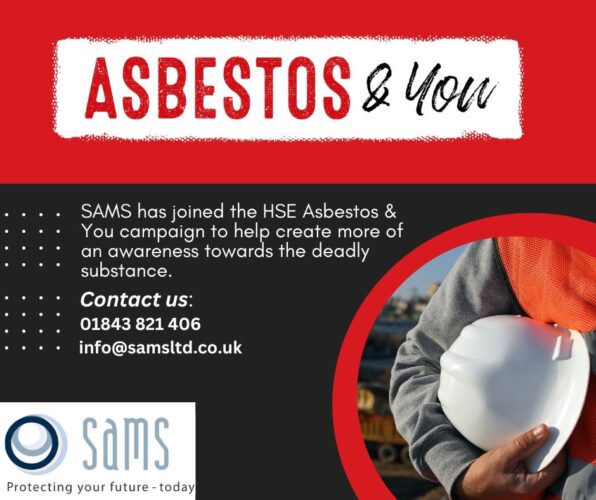Any job, any day of the week, can potentially release lethal asbestos fibres. And unlike sawdust or other particulates, you can’t see, smell, or feel the fibres in the air or on your clothes.
Asbestos can be found in any building built or refurbished before the year 2000. Unfortunately, over 5000 people still die each year from past exposure to asbestos. It’s is the HSE’s aim to reduce this to zero in years to come, and we want to be a part of it!
As part of the new HSE Asbestos & You campaign, we are going to give you a refresh on what asbestos is, and why it’s important to improve your awareness of it.
What is asbestos?
Asbestos is a mixture of six fibrous minerals that occur naturally. These are crocidolite, anthophyllite, chrysotile, amosite, actinolite and chrysotile. They are microscopic fibres that, when bundled together, make asbestos extremely durable, and naturally resistant to fire and electricity.
Why is asbestos dangerous?
Asbestos microscopic fibres are so small that they can easily be inhaled, and it is here that lies the problem. Once inhaled, these rigid fibres attach to the lining of the lungs, becoming lodged within the respiratory system’s soft tissues, and can’t break down – nor can the body get rid of them. Once there, they cause continual damage that can lead to major health complications in life later, including cancer, asbestosis, and non-malignant pleural disease, amongst others.
Even though asbestos became completely illegal from 2000, there are still many buildings today that have asbestos in them. Unless you have gone digging around and disturbed the asbestos, it shouldn’t influence you – but those that worked with and alongside asbestos are more likely to potentially contract the diseases associated with it.
Sadly, if you live or lived with someone who worked with or alongside asbestos, then you may also be vulnerable to contracting an asbestos related disease. How? Well, the asbestos fibres can attach to the clothing of the person working with asbestos and be brought home.
The main reason for the sudden development of numerous asbestos-related illnesses is down to the buildings that people have either worked in, lived in or been taught in. The UK overall has a higher number of people suffering from mesothelioma, because as a country the UK imported a huge amount in the post-War period, and was later than some other countries in restricting and banning the use of asbestos.
Working alongside asbestos
Thankfully, as previously stated, it is now illegal to use asbestos in the UK. If you do have to work alongside asbestos, you have to be specially trained, have the correct clothing, and have strict and specialised health and safety measures in place, plus a licence.
Here at SAMS, we have all the asbestos courses you need to become fully qualified in dealing with asbestos. We are also able to offer you your asbestos licence once you have completed and passed your course, helping to give you and your customers peace of mind that you can handle asbestos safely.
For more information, take a look at our Asbestos Management service or get in touch today to talk over the asbestos licence.
UKATA Asbestos Awareness Course
Our UKATA Asbestos Awareness online course is an ideal introduction to the subject of asbestos awareness. You’ll learn about the different kinds of asbestos and their deadly properties, how to spot asbestos, and how to deal with it safely.
This course is open to everyone, whether you’re a builder or plumber looking to work more safely, or a homeowner worried about insulation or Artex. With many of us now routinely working at home, this is a great way to learn a new skill from your PC or laptop.
To find out more about the course and book your place, click here. Alternatively, to learn more about our asbestos management services, our other courses or our safety consultancy service, don’t hesitate to get in touch.

